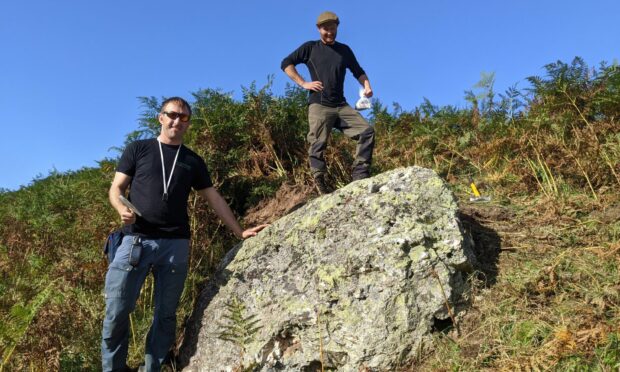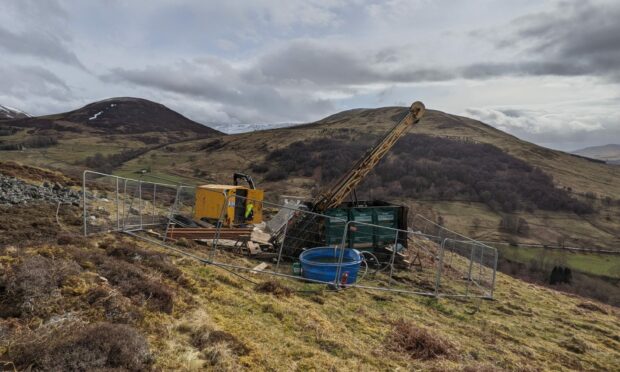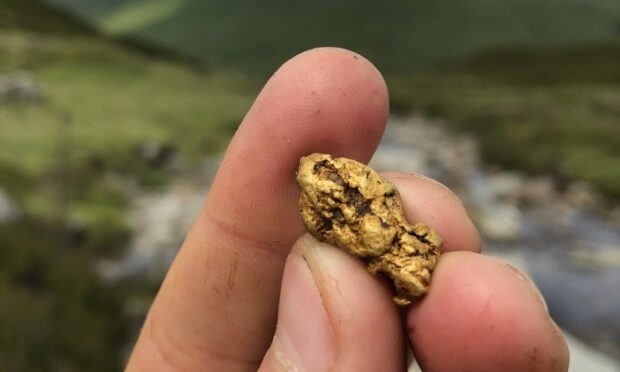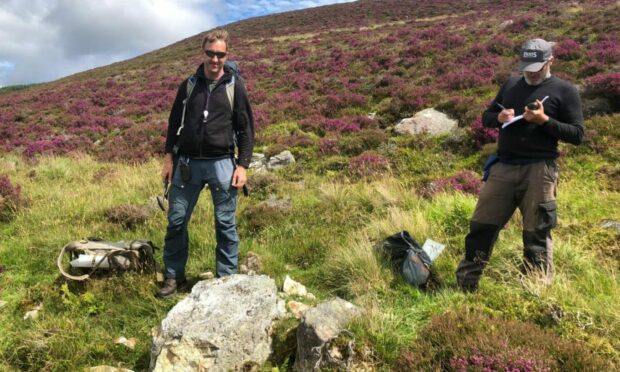A gold-exploration venture in the Perthshire hills could lead to the production of hundreds of millions of pounds of the precious metal.
Erris Gold Resources’ project could also create hundreds of local jobs.
It has been involved at Loch Tay since 2019. If everything goes to plan, it is hoped mining can start within the next decade.
Chief executive Aiden Lavelle said that once up and running, a gold mine could create anywhere between 80 and 200 jobs, depending on the size of the deposit.
Highly-prospective targets
He told the Courier that the Loch Tay licence area covers 237 sq km.
Since the company’s team started fieldwork 18 months ago, it has defined a number of highly-prospective targets.
The main prospect is Lead Trial – named after small-scale historic workings for lead at the location.
The chief executive said the prospect has a large, mineralised footprint extending over 4.5 sq km.
There are quartz veins carrying high-grade, coarse and nuggety gold.
Lead Trial has the potential to contain more than 250,000 ounces of gold, according to Mr Lavelle.
He added: “To date, the company has done mapping, rock sampling, a ground magnetic survey, soil sampling, deep overburden sampling and a scout drill programme at Lead Trial.
“The company completed six drill holes as part of the first scout drilling programme last month.
“This was intended to test the mineralisation model (proof of concept).
“We are pleased to say that drilling did encounter multiple mineralised structures that are open along strike and at depth, although gold assays are pending.
“One significant fault with intense alteration and veining over many metres of width was encountered in the third drill hole.
“The gold is very fine and samples are now at the lab for testing.”
Mr Lavelle said the plan is to produce the gold at the Perthshire site by underground mining, with just a small surface footprint.
He added: “The company is committed to best practice in the industry and responsible exploration.
“We believe we have good local support, with some local landowners invested in the company.”
Preparing for the stock market
The chief executive said Erris, which has a base at Aberfeldy, is preparing for a listing on the London stock market later this year.
It plans to raise several million pounds to help fund Lead Trial drilling.
He said the scale of the prospect warrants a major drilling campaign to test what appears to be a large gold-mineralised system.
“While the minimum target is 250,000 ounces, the company’s geologists believe that the project has ample size and strike length of altered and mineralised faults to host a much larger gold resource.”
Erris has also submitted an application to the Crown Estate for an area of 250 sq km of prospective ground next to the Loch Tay licence.
This Glen Almond application is expected to be granted imminently.
Mr Lavelle said the Loch Tay licence area covers several significant historic workings for copper, silver and lead.
It also covers several places with known and locally-abundant alluvial gold.
However, there is no guarantee of success when it comes to gold mining in Scotland.
Last month Scotgold Resources saw its shares plunge.
That came after it warned that output in its first year at Cononish would be “materially less” than previous guidance.
The initial “pour” of Scotland’s first commercially-produced gold from the site near Tyndrum came at the end of last November.
Perthshire gold exploration history
Gold mining in Courier Country dates back to Fife in 1852.
Then, gold was valued at £4 an ounce and a skilled worker earned less than £50 a year.
The prospect of making a year’s wages in less than a month inspired labourers to head for the hills around Auchtermuchty and Kinnesswood.
Unfortunately, most did not know how to extract gold or what natural gold looked like.
Their sacks of glinting minerals mostly turned out to be pyrite, known as fool’s gold.
Cononish was historically known for lead mining, but gold was not discovered there until the 1980s



